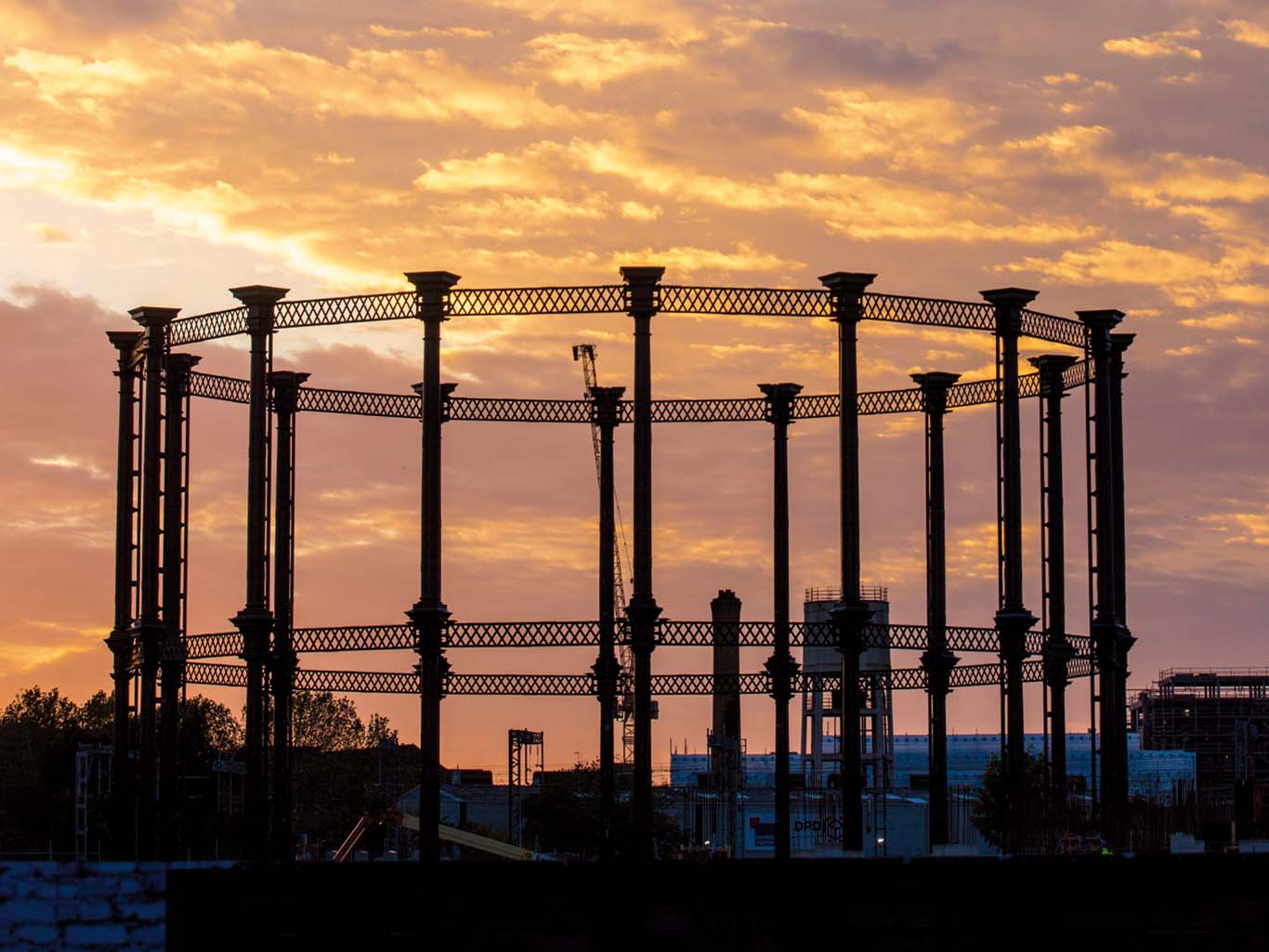
When you spot an abandoned ironwork cylinder towering on the horizon, what do you feel? Two hundred years after they first rose across the country, gas holders, once a practical necessity in illuminating the 19th century nights, have become a striking visual link with our past. Yet otherwise, they are no longer of practical use.
In the last decade, hundreds of them have been torn down, their redundancy in the modern world seemingly absolute. To some people, they are little more than decrepit industrial eyesores, a squatting annoyance on a slice of prime real estate.
Yet for many more of us, they are proud urban landmarks, real-world map pins that guided our passage around town before – and after – the skyscrapers came, and our pockets contained the stupefying compass of a GPS phone.
Should at least a few of them be saved? Celebrated for their former energy history, as well as their navigational and curiously beautiful aesthetic properties?
LOCAL ADVERTISING
Sarah O’Carroll has carved out a bit of a geek reputation for herself via her Twitter project @GasometerGal, as she tries to photograph all the remaining gasometers (she prefers the more lyrical term) before they are gone forever.
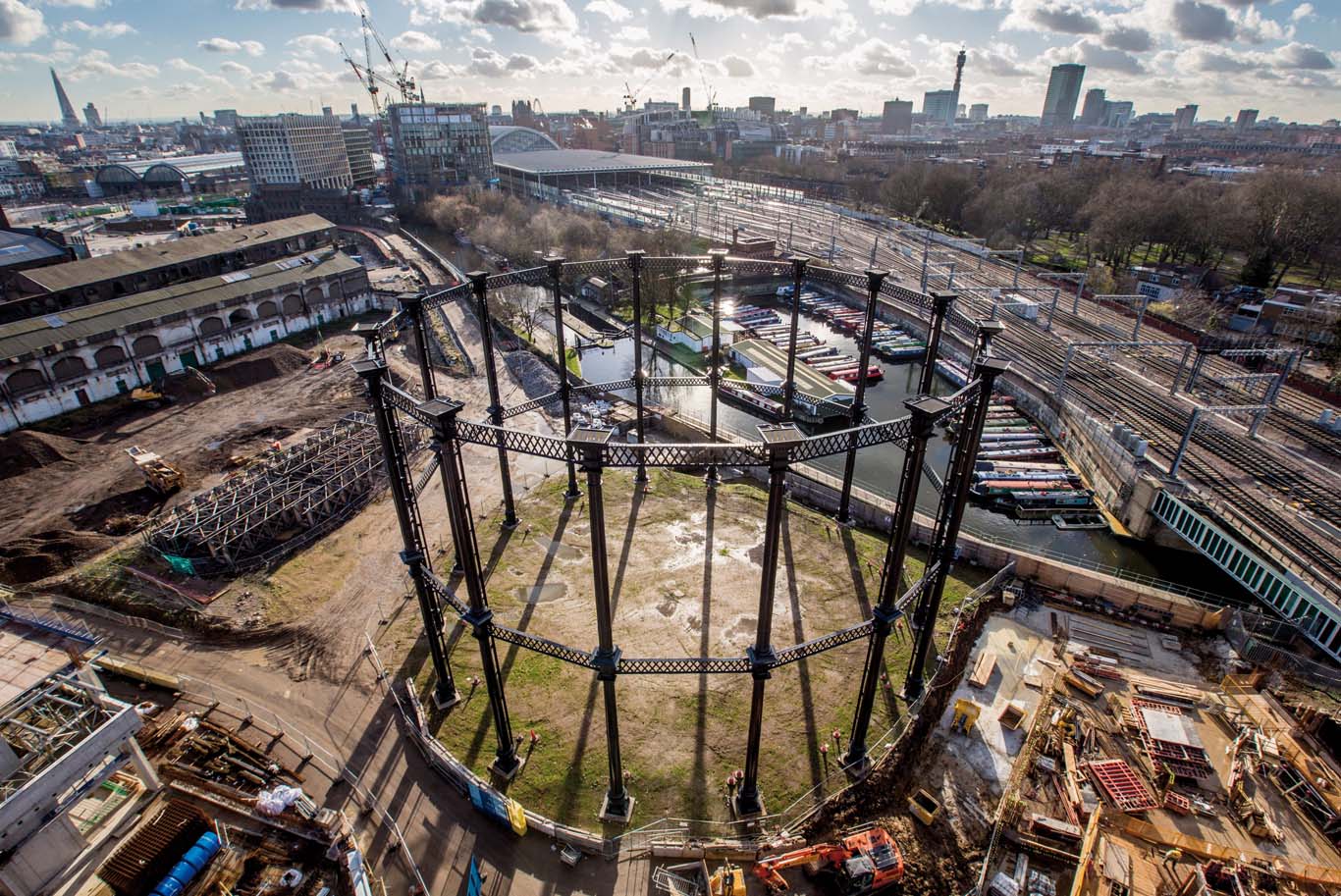
“I’d been aware of them when I was very young,” she explains. “We’d pass our local ones from time to time, and I’d not be very sure about them, realising that sometimes there was just the frame, but at other times there was this solid structure there. I didn’t understand how it could be there one day, and gone the next.
“When I realised the National Grid had started on the dismantling programme, I wanted to preserve at least a photographic memory of these magnificent brooding beasts, but now I had a vague deadline, there was a pressing reason to go out and find them.”
Using retro resources – such as a 1977 A-Z – to hone in on some often lost locations, she began her quest, as the clock ticked.
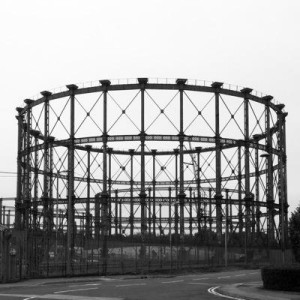
“I managed to get to Kingston before it was demolished,” she beams, “but for others, such as Snakes Lane in Redbridge, I was too late.”
Much-loved examples at Oval, Bethnal Green, Battersea and Kensal Rise also await the grim angle grinder, so now’s your chance to capture them too.
“I know that we’re not going to be able to keep them all,” says Sarah, “I wouldn’t suggest that we should, and we need the land. But I don’t want them all to go from our skyline. Having the huge frames gives us a sense of what went before us. Their presence gives anchor to the development of London, of how the waterways were used, and how housing development grew around them.”
Gas holders – spelt as two words unlike our title – have been a defining feature of the King’s Cross skyline for over 150 years, ever since the Imperial Gas Light and Coke Company built the largest gasworks in the world here, in a plum position right next to the canal, railways and coal supplies of Goods Yard.
At its peak, 23 guideframes housing tanks of different sizes rose and fell at the Pancras Gasworks site, as the fuel was produced from coal in the day to fill the central chambers, then pumped out to heat, feed and light the local area at night.
Years of indecision over what to do with the Badlands north of King’s Cross station meant that these distinctive curves continued to define the landscape long after they were decommissioned. In fact the final one was only removed in 2011.
But unlike so many others, which will simply vanish, Pancras gas holders numbers 8, 10, 11 & 12 are preparing to enjoy a comfortable retirement, one in which they will return to feature in the visual language of this part of town.
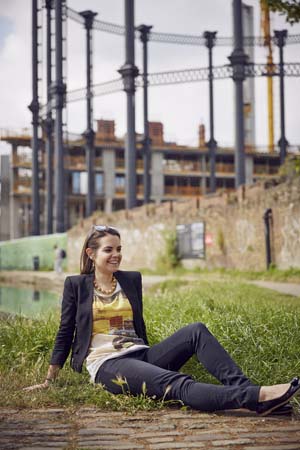
Morwenna Wilson is the award-winning engineer in charge of this lovingly realised heritage project, alongside wider restoration work in King’s Cross such as transforming the Fish and Coal Buildings into Jamie Oliver’s global HQ.
She oversaw the dismantling of Gasholder No. 8 back in 2011, its subsequent restoration by a specialist firm up in Yorkshire, and its painstaking resurrection just over the canal from its original home last year.
“There are no Ikea instructions when you’re putting together something built over 150 years ago,” she says. “So before we took it down, we performed a special, highly accurate 3D process called a point cloud survey. If a column had a three degree lean, we’ve put it back just like that on the new site.”
More of a problem will be re-erecting the next three gas holders, known as the Siamese Triplet because the frames all share a single central spine. They were taken down before Morwenna started on the job (you may remember they sat in piles along Pancras Rd for many years while the Eurostar was being built), so no such computer survey was done.
And even with all the latest tech, there have still been some fascinating discoveries presenting unexpected challenges.
[quote cite=”Morwenna Wilson”]We think it’s likely that kids were sent inside these narrow spaces to tighten up the bolts[/quote]
“When we took down Gasholder No.8,” Wilson says, “we discovered that the middle of each column had originally been bolted together from the inside. We think it’s likely that kids were sent inside these narrow spaces to tighten up the bolts. Health and Safety practices today don’t allow people – let alone small children – to work in such confined spaces, so we had to work out ways to put it all back together from the outside, while retaining the aesthetics of the frame. If you look closely today you’ll see a simple strapping detail on the columns. We think it works well and we hope most people do.”
Next month, Gasholder Park finally opens in and around the fully refurbished No.8. It’s a brand new public space for what developers Argent term ‘informal use’, essentially lots of picnicking spots facing the canal (which has been such a hit on the steps at Granary Square), plus an event space in the centre of the structure for over 2,000 people.
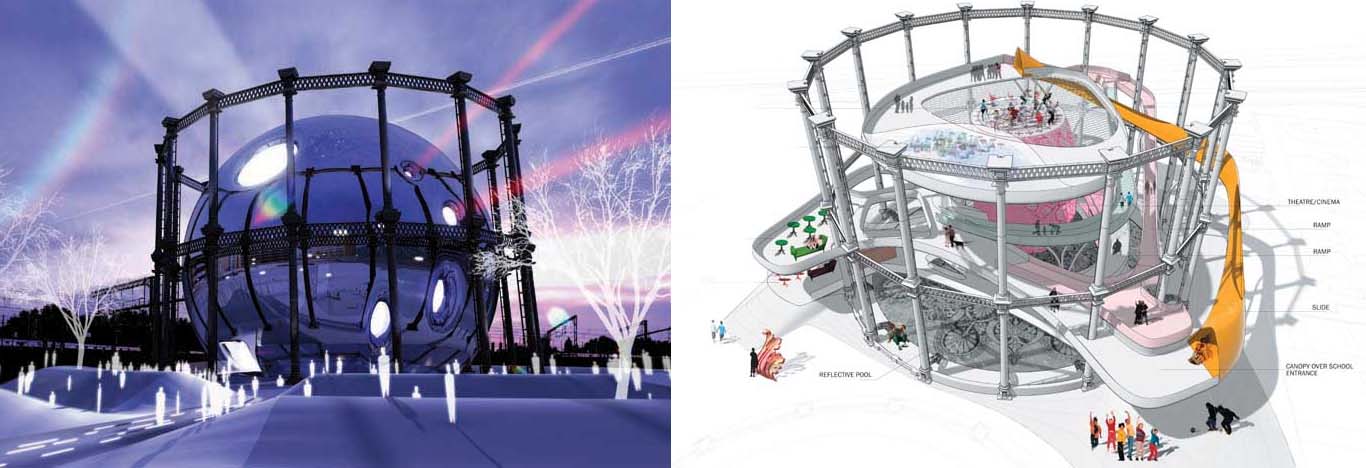
The final design was the outright winner from competition that saw eighty entries, all aiming to create a significant new cultural destination at King’s Cross. One kooky concept saw giant slides and a rooftop trampoline make upbeat use of the Victorian ironwork frame, another envisioned a vast silver ball in the centre, mirroring those curvaceous girders. The winning design incorporates mirror images too, in the form of a polished canopy that offers glimpses of the gasholder from different angles.
“The original structure is 26 metres high,” says Morwenna, “so you can easily feel a little bit lost. The canopy idea is to semi-cover the space to feel the human scale before wandering around outside to enjoy the immense volume.”
GasometerGal Sarah is clearly chuffed that her fave industrial icons are being preserved here, but she stills feels that their urban majesty is somewhat diminished.
“If they’re not in-situ I think you lose a sense of sheer scale,” she says. “As with Battersea Power Station, we’re building new tall structures around them, so they’re becoming more hidden. The integration into housing and public park in King’s Cross shows how we can successfully preserve and reuse the structure, but already No. 8 is being dwarfed by the new buildings around it.”
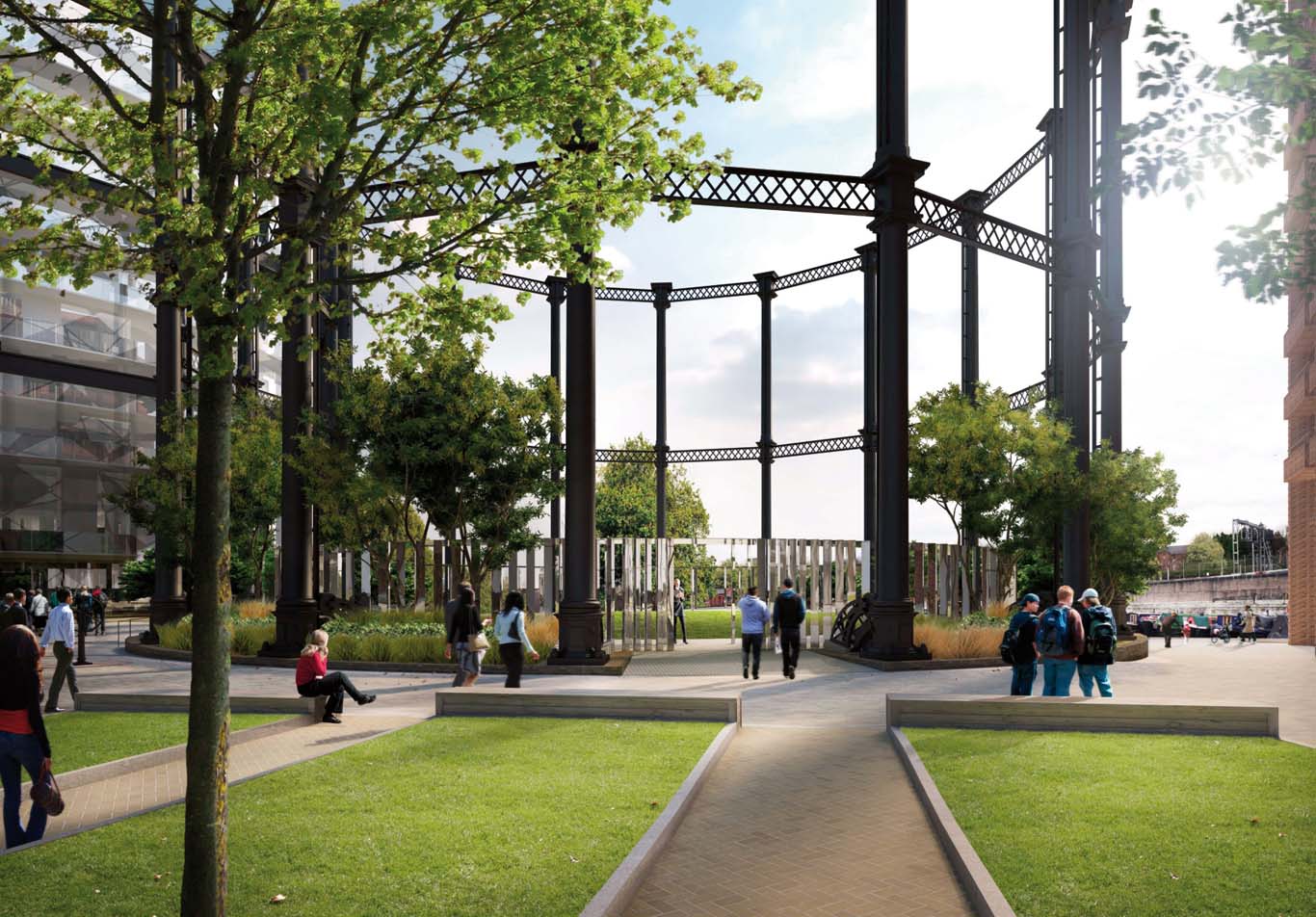
But Morwenna offers a reminder that we’re incredibly lucky to have them return at all. “The reality is that to keep these amazing assets you have to invest a lot of money in them,” she says, “and that’s always going to be in the broader context of a larger site. When deciding to preserve the gas holders here, we were acutely aware that heritage is important for making people love a place, but in other parts of the country, the investment is harder to justify.”
Despite suffering redundancy in the modern world, our local gas holders, at least, are preparing to define King’s Cross for future generations. Previously they would have signified a warm night for some, for others, employment. Later still, they were the skeletons of lost industry, landmarks that clubbers watched the sun rise over from the terrace the area’s nightclubs.
Many things to many people, but always there, framing the busy maelstrom of King’s Cross. The perfect name to give a locally-focused cultural title, in fact.

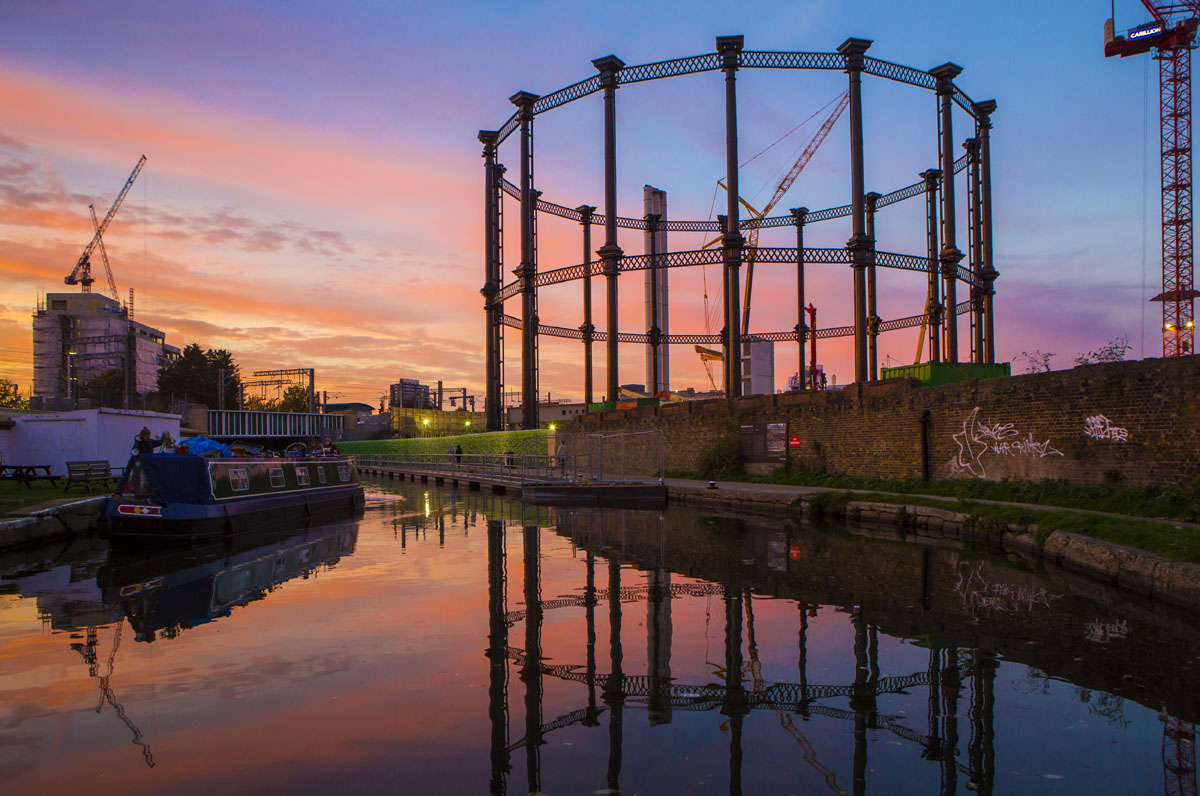


6 thoughts on “A love letter to Gas Holders”
thevicsoc I have always loved Gasometers,even as a small child I would go looking for them,Practically every tow in England one!
cornwell167 Do you have a favourite?
thevicsoc I loved the ones at Kings Cross saw them from the train,& there was one here in Alnwick thhat had been painted in red now no more
I live near the former Granton gasworks in Edinburgh,they’ve knocked down two of the Gasholders and now only 1 remains. NG want to knock it down but i hope it stays
You might try looking at East Greenwich before it is too late. Biggest in the world when built to George Livesey’s revolutionary design – still one of the biggest in the world. Not recommended for listing because second Livesey holder not the first. Argueably demonstrating early modern movement design ideas. Probably doomed.